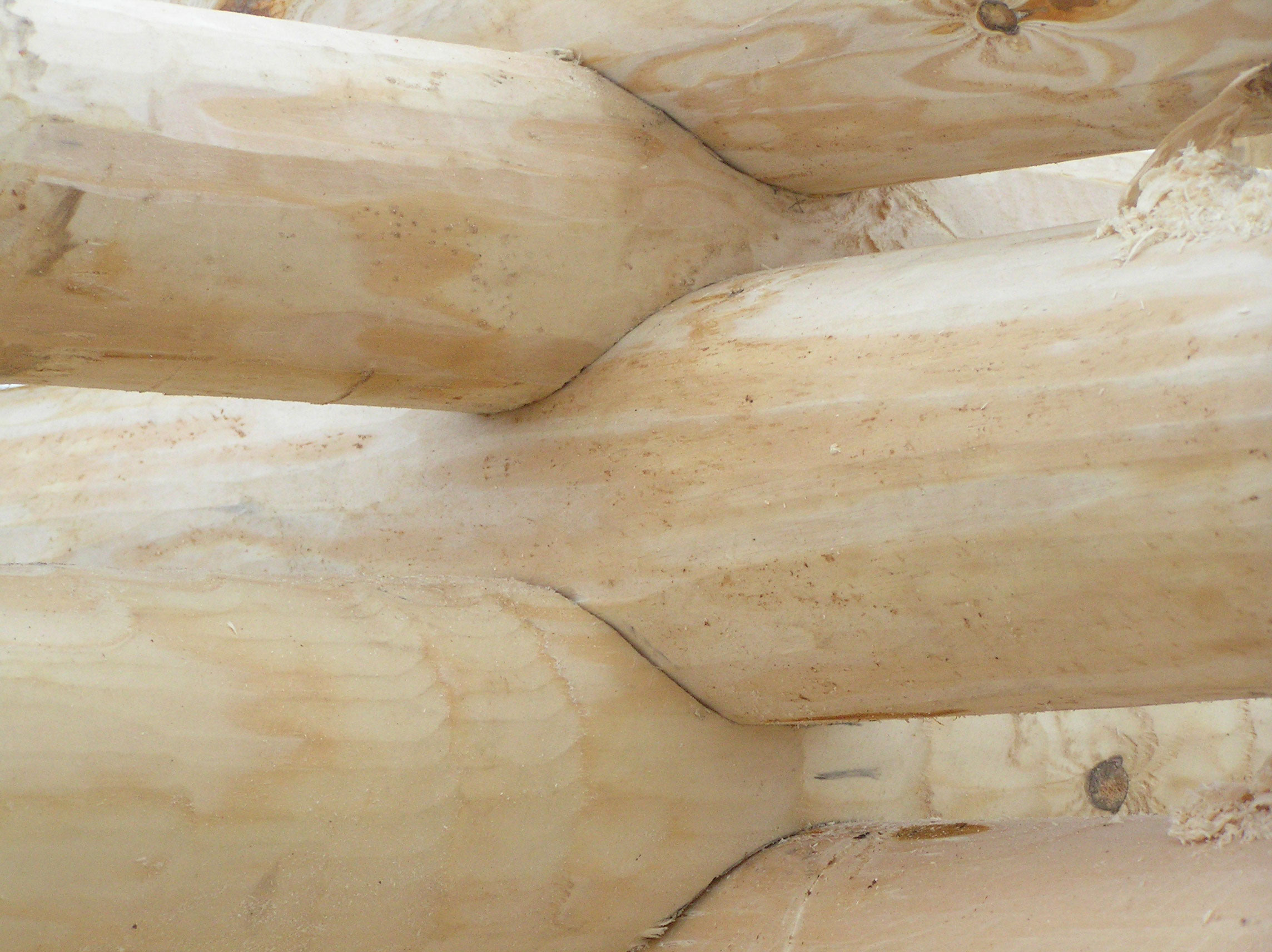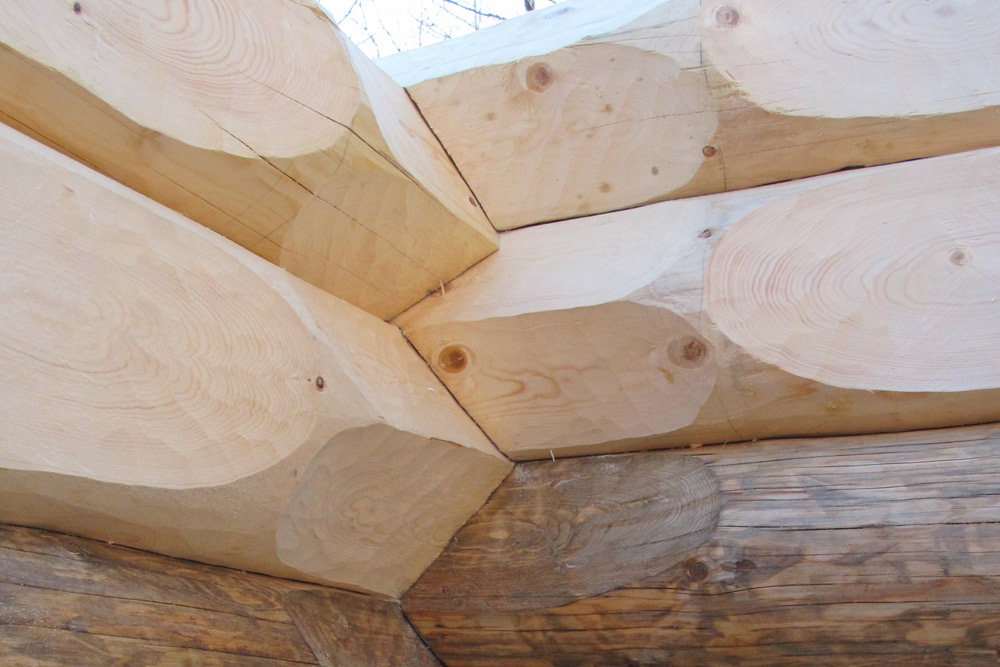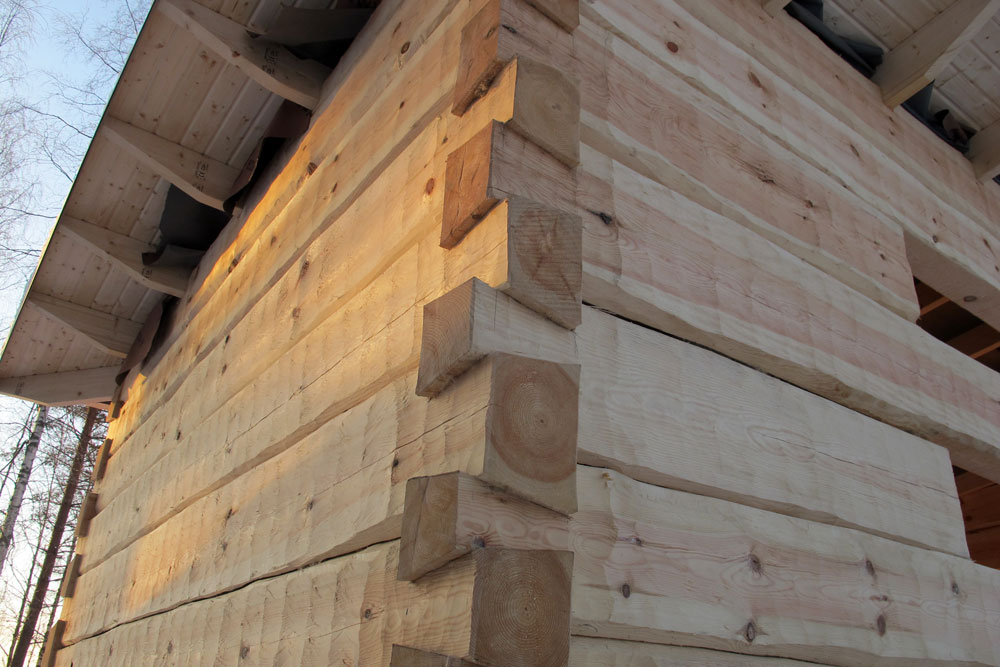Different notch types
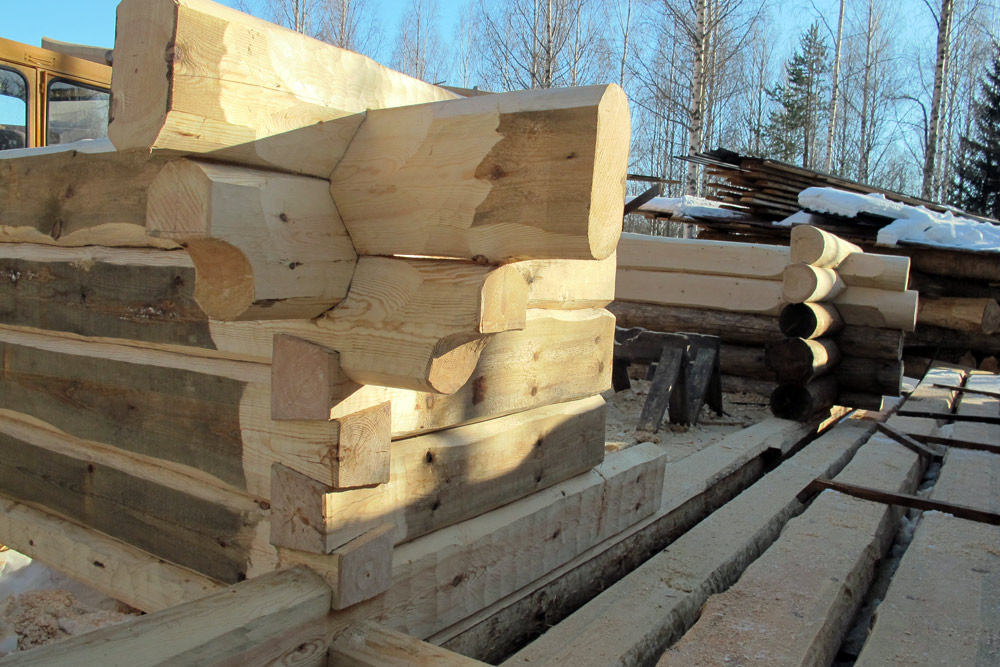
Löydätkö kuvasta ristinurkan, lohenpyrstön, satula- ja sulkanurkan sekä ämmänurkan?
Most common notch types
Factors influencing the notch type choice are wood dryness, log shape (square logs or round logs), what the building is built for, and of course, customer’s individual preferences – the notch type has a strong influence on the look of the building. The overall most common notch types (also being the most popular in Finland) are the round notch and long cross notch. Also the dovetail notch is commonly used and is a well-known notch type. A commonality between all of these notch types is that the wood needs to be very well dried. These notch types do not tighten when the wood shrinks as it dries, which can result in some seams (vertical seams in particular) opening with time. This phenomenon can be observed in many old buildings.
Self-tightening notches
Especially when the building is used for living in and when using big logs for building, it is a good idea to choose a notch type that is designed to be self-tightening as the wood dries with time. These notch types also seal the building better than the round notch or the long cross notch. In Finland, one of the most commonly used self-tightening notches is the diamond notch. The Karelian notch, much used in Russia, and its Canadian variation, the saddle notch, are technically excellent. Norway is a country with a lot of wind, hence it does not come as a surprise that the Norvegian notch is perhaps the notch type that seals the building best. It also looks good! Self-tightening notches can be used for square logs and round logs, and they seal the building well even when a building is made with fresh wood. We highly recommend Norvegian notches.
Norvegian notch:
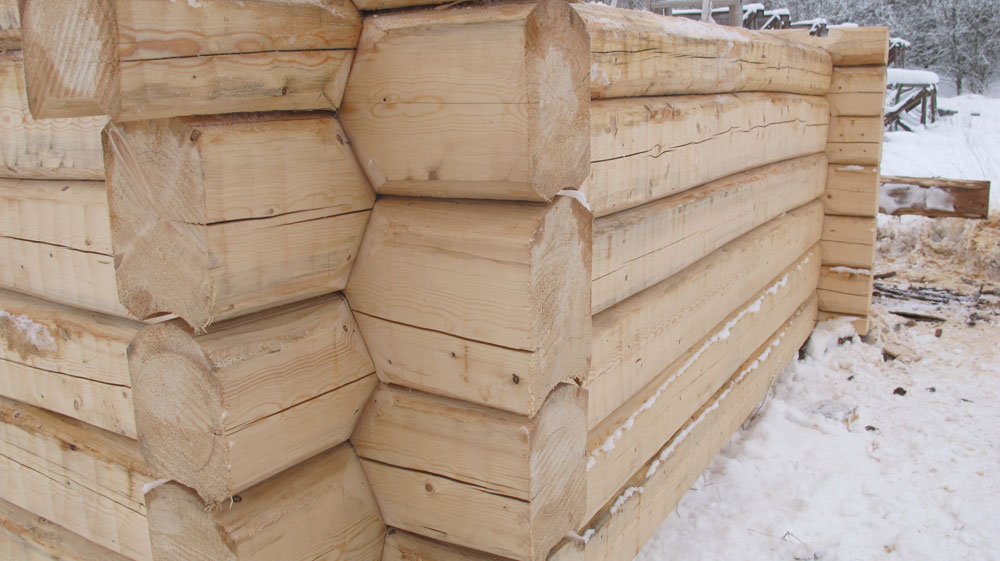
Diamond notch:
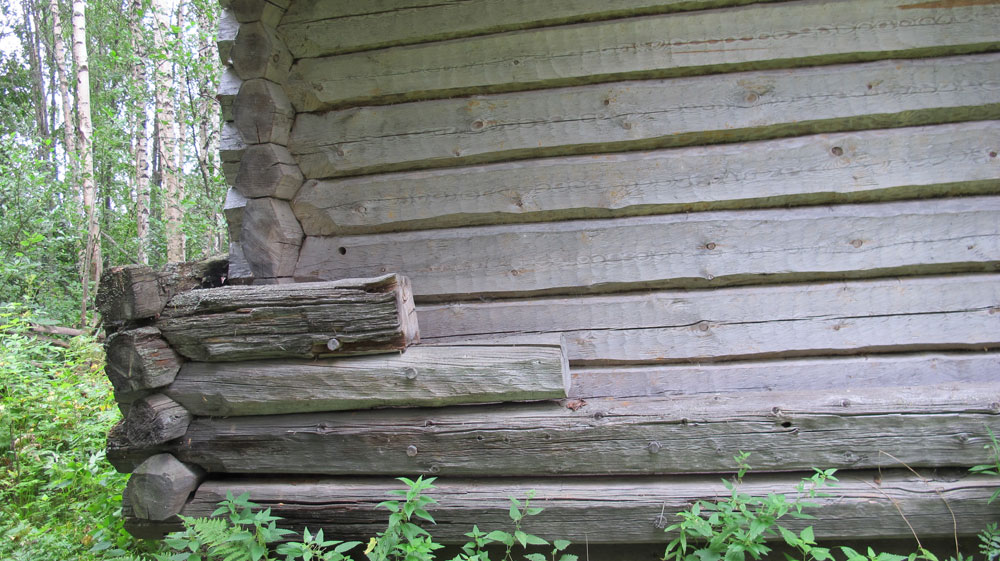
Saddle notch:

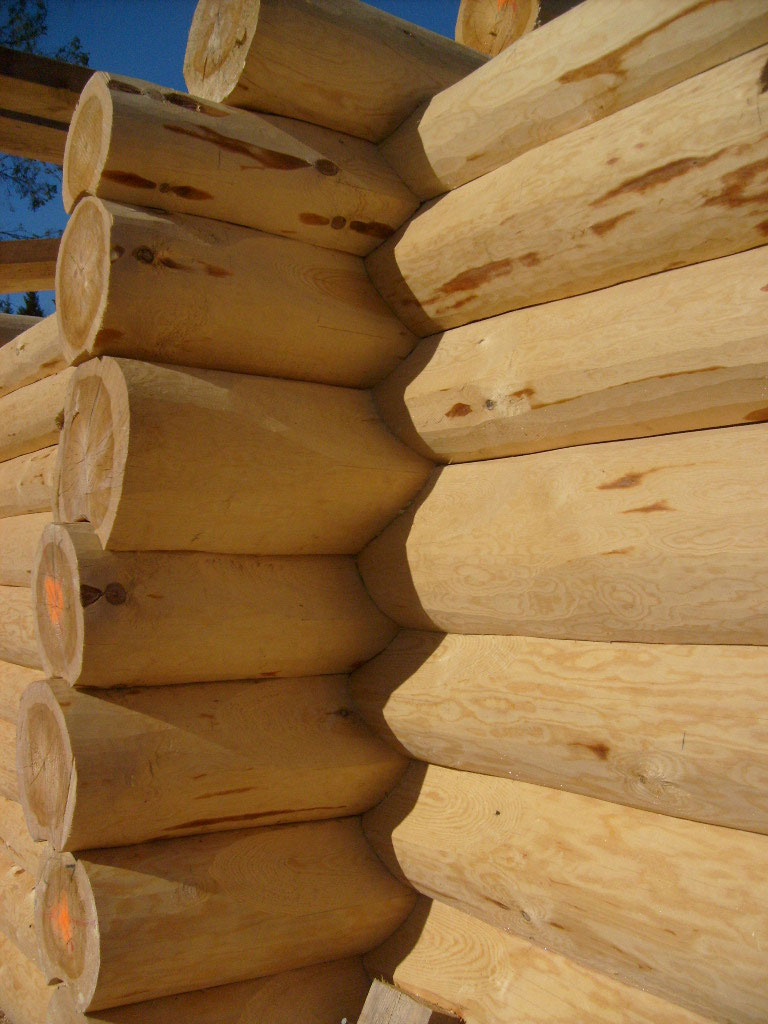
Dovetail notch:
Long cross notch:
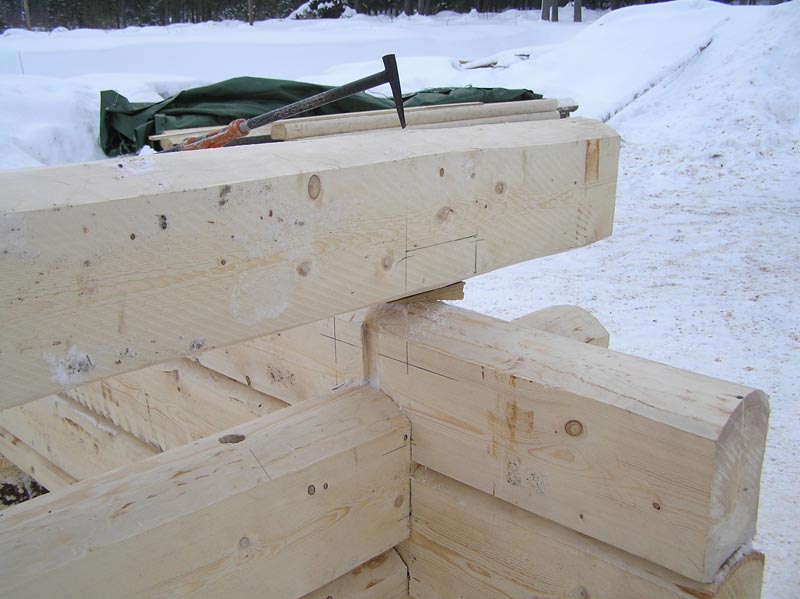
Long cross notch:
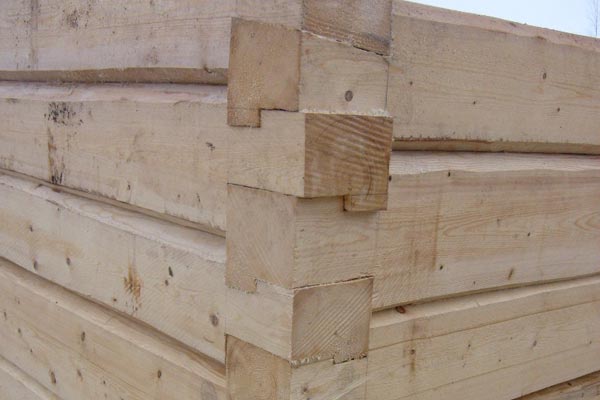
Round notch:
